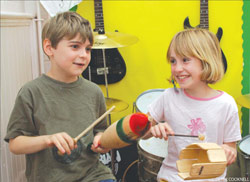Mood music
Add to My Folder
Listen to classical music to help children tap into their emotions

When music is playing we’re either tuned into it or unaware of it. Classical music doesn’t have the immediacy of pop music because it sometimes lacks a continuous regular beat, often lacks vocals and is usually much lengthier than pop, which is why children tend to ‘tune out’ of classical music.
When we are tuned into music we respond emotionally to what we hear. This might be a feeling of happiness, elation, tranquillity, melancholy, power, strength, amusement, or a subtler, ‘tingle’ factor. It is this that makes us want to hear that music again. Hearing it more than once makes familiarity kick in, and familiarity breeds enjoyment.
Enjoying music makes us want to hear it again and it is then that we notice more about the piece, which heightens the pleasure, and so the cycle continues. To help children enjoy classical music we need firstly to choose the right piece of music, and secondly to find ways of getting children to want to listen to the piece more than once. After that, familiarity with the piece will generate enjoyment.
When you use classical music make sure you listen to short pieces, ideally under four minutes long. (See ‘Classical music’ box, right, for some ideas.) Listen actively rather than simply sitting still. Children can get the ‘feel’ of a piece of music when they are involved with a complementary activity, such as those detailed here.
ACTIVITIES Ages 7-11
Scholastic Resource Bank: Primary - join today!
- Over 6,000 primary activities, lesson ideas and resources
- Perfect for anyone working with children from 5 to 11 years old
- Unlimited access from just £1.25 per month
Already a member? Sign in below.
Published 10 June 2008
Reviews
You need to be signed in to place a review.